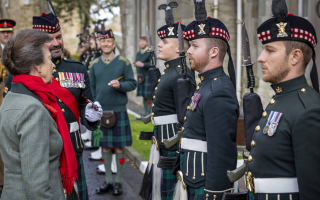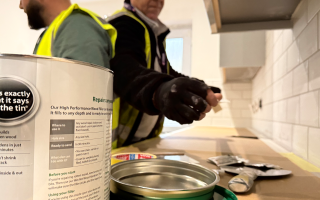Feature
The Abandoned Artefacts of War
The memories of war live long in the minds of those who have served in them. Memorial plaques and poignant stone statues have risen long after arms were laid down. They stand out of respect for the dead and a reminder for all as to the horrors that have come and since gone.
But some monuments arise through less conventional means. Those monuments, left by wars we prefer to forget, are rarely celebrated but nevertheless endure. Huge defensive fortifications built on both sides of the channel and beyond during the Second World War have provided photographer Marc Wilson with inspiration for his new book, ‘The Last Stand’.
The brutal and imposing monoliths are illustrated below alongside captions from the book itself, which was released last year.
Lossiemouth, Moray, Scotland
A line of defences ran along the Moray coastline between Cullen Bay and Findhorn Bay through the Lossie and Roseisle forests. Anti-tank blocks ran the full length of this part of the coast, forming a barrier with the pillboxes that were placed between them at regular intervals. Some of the defences were constructed by a Polish army engineer corps stationed in Scotland.
Kazimierz Durkacz, a medical student who joined the Polish forces, wrote: “At first, we used wood to make the moulds for the large concrete blocks and then a combination of corrugated iron and wood... I remember mixing concrete with a shovel.”
Braunton Burrows, Devon, England
Braunton Burrows was the location of live firing ranges and dummy pillboxes used by US troops for training. In the Burrows are the remains of concrete replicas of landing craft. Their fronts slope down, as did the ramps of the real craft once they were lowered. The water in the dip at the front of the mock-ups represented the sea into which the soldiers had to plunge when they landed on the D-Day beaches in Normandy.
(Left) Portland, Dorset, England
The Verne Battery was built in 1892 in a disused stone quarry
on the Isle of Portland in Dorset as part of Britain’s coastal
defences. Decommissioned in 1906, it was used after WW1 for
storing field guns brought over from France, and during WW2
to house ammunition in preparation for the D-Day landings. It
also became an AA battery (anti-aircraft artillery). Thousands
of gravestones were hewn from Portland Stone for the fallen
Allied soldiers who died in both World Wars. It was also used
to build the Cenotaph in Whitehall.
(Right) Tilbury, Thurrock, England
Coalhouse Fort, a 19th-century Palmerston Fort built to protect
London from invasion by France, was re-armed during WW2.
A monitoring station inside the fort used cables laid on the
riverbed to check the magnetic fields of the steel hulls of
passing ships, which could trigger German magnetic mines. If
necessary, the boats were ordered back to Tilbury Docks to be
degaussed (demagnetized) by fitting electric cables around the
hull and passing electric current through them.
(Left) Lorient, Brittany, France
The Brittany harbours of Brest, Lorient and Saint-Nazaire
became bases for the German submarines that attacked the
convoys bringing military equipment and food supplies from
the United States to Britain.
In Lorient, the largest of these U-boat bases, the Germans built
three gigantic reinforced concrete structures on the Keroman
peninsula. The third of these, ‘K3’, was 138 metres long, 170
metres wide and 20 metres high. It was protected by a double
roof 7.4 metres thick that the Allies were unable to destroy,
despite very heavy bombing. Floating armoured doors sealed
the pens, from which the U-boats had direct access to the deep
waters of the estuary.
(Right)
A final photo from Wissant, Nord-Pas-De-Calais, France.
"In terms of the wider history of mankind wars are often brief, but their effects and their traces are, invariably, enduring."
All images courtesy ofMarc Wilson, image captions provided thanks to Elaine Wilson,and text from the foreward courtesy of Roy Exley












